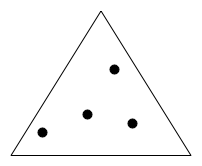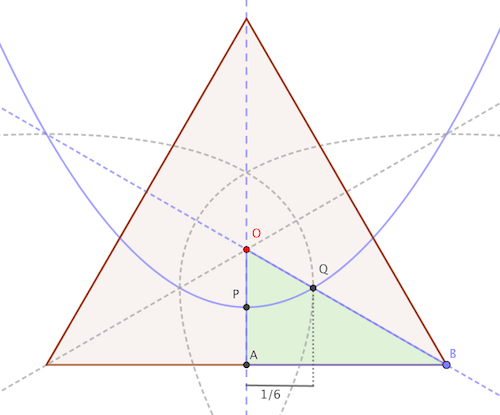Circles wont work
 What is the probability (to 3 decimal places) that a point
P
picked uniformly at random inside an equilateral triangle, is closer to the centroid than to its sides?
What is the probability (to 3 decimal places) that a point
P
picked uniformly at random inside an equilateral triangle, is closer to the centroid than to its sides?
The answer is 0.185.
This section requires Javascript.
You are seeing this because something didn't load right. We suggest you, (a) try
refreshing the page, (b) enabling javascript if it is disabled on your browser and,
finally, (c)
loading the
non-javascript version of this page
. We're sorry about the hassle.
3 solutions

The same :)
How is this even discrete mathematics tho

The points of the triangle that are at the same distance from the centroid and each side must lie on a parabola . The guitar-pluck-like shape formed by the intersection of the three parabolas contains all the points that are closer to the centroid than to its sides. Let's call S the area of this region and T , the area of the triangle. The probability we are looking for is p = T S . By symmetry, this ratio can be obtained by calculating the areas of the regions O P Q and O A B .
Consider a triangle of side 1 and write all coordinates with respect to A . The position of its centroid is ( 0 , 6 3 ) and the vertex of the parabola lies at ( 0 , 1 2 3 ) .
The equations of line O B and parabola P Q are:
line O B : y parabola: y = = 6 3 ( 1 − 2 x ) 3 ( x 2 + 1 2 1 )
These two curves intersect at x = 6 1 .
The area O P Q is given by the integral ∫ 0 6 1 [ 6 3 ( 1 − 2 x ) − 3 ( x 2 + 1 2 1 ) ] d x = 6 4 8 5 3
and the area of triangle O A B is 2 4 3 .
Finally, p = area O A B area O P Q = 2 7 5